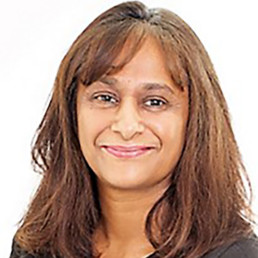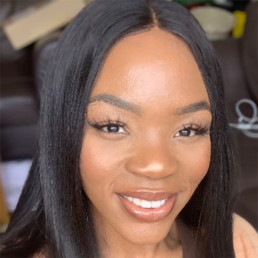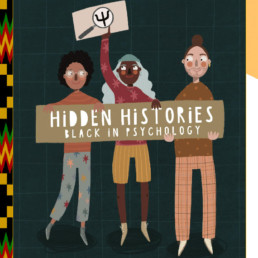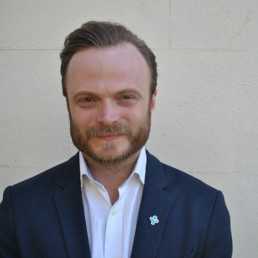What does Remembrance Day mean to you?

Written by Rich Watts
Rich Watts is a qualified teacher with over 10 years’ experience in the classroom, he has an MA in Education from the University of Winchester. He has worked in several roles in schools, including Head of Faculty. Rich left the classroom in 2018 to head up the British Army Supporting Education (BASE) Programme.
When you think of Remembrance Day, what comes to mind? Traditionally, we associate it with wearing red poppies and The Cenotaph. In actuality, it means different things to different people.
So, for 2022 we have developed new, free resources that introduce students to the ways different groups commemorate Remembrance, highlighting diverse voices and experiences. The resources have been designed to encourage students to further explore the vital, unsung role of women as well as members of the LGBTQ+, Sikh and black communities.
The resources have been created for students aged 11-16 across all four nations. They present schools with a fresh and engaging approach to Remembrance Day. Students will learn what Remembrance is, why we come together to commemorate it and the diverse ways that we commemorate Remembrance. Individuals will also develop key skills and knowledge on the topics of similarities and differences.
This year’s resources have been designed to encourage students to think about the parades and memorials they will have seen – perhaps a theatre production too. Students will be encouraged to find out more about The Women of World War II Memorial. It remembers the seven million women who served, either in the armed forces or on the Home Front. And at the Imperial War Museum, visitors can see the Memorial to Black, Asian and Minority Ethnic (BAME) communities who lost their lives to conflicts in the name of Britain’s Empire and Commonwealth.
Students will be asked to think about the different varieties of poppies that are worn to mark Remembrance and their individual significance. Did you know that the Khadi poppy honours the contribution of Indian soldiers to Britain during World War I? And did you know that the purple poppy commemorates the animals that have been victims of war?
Students can further explore subjects touched upon in the Remembrance resources. They will learn about the remarkable contribution of diverse voices standing shoulder to shoulder with Army personnel past and present, including women and members of the black and LGBTQ+ communities. It also includes a Sikh Service pack produced in association with the Defense Network and historian, Gurinder Singh Mann. It allows students to understand the varied contributions of Sikh soldiers throughout the history of the British Army.
Julian James, a design technology teacher in Wales, said: “For too long, assemblies celebrating Remembrance Day have always followed the same outdated format. To mark this year’s poignant event, the British Army is providing schools with a fresh approach to presenting such important, historical information. Its resources feature music, thought-provoking images and stimulate questioning. The Army’s lesson resources are undoubtedly a new way of keeping the tradition of Remembrance Day going, while deepening students’ knowledge of its meaning and relevance to their lives.”
Teachers can download the Remembrance Day resources for free at: https://britishar.my/remembrance
Tackling unconscious bias within UK schools

Written by Sonia Elmer-Soman
Sonia Elmer-Soman has a background in both law and education. She is a qualified law lecturer and has many years’ experience working as a legal practitioner in two prestigious law firms in the City and now within a reputable law firm local to her home town in Essex. She is also a qualified primary school teacher and is a guest writer for professional journals.
This blog was written for the National Association of Primary Education (‘NAPE’) and Primary First.
What is Unconscious Bias?
If statistics are to be believed, the Gov.uk paper on School teacher Workforce – Ethnicity Facts and Figures (2019) revealed that 85.7% of all teachers in state funded schools in England were white British. 3.8% of teachers were from the White Other ethnic group, the second highest percentage after the white British group and 92.7% of head teachers were white British whilst only 65.4% of pupils are from a white British background.
Whether we like it or not, we all exhibit unconscious bias in some way whether deciding which friend to honour a dinner date with when we’ve double-booked or making application shortlists that reflect our own cultural experiences. Unconscious bias is about patterns of behaviour that affect our everyday decision making and which are influenced by shared background, culture, and personal experiences.
Surely it is time to address the implications of unconscious bias within UK state schools? Of interest is how biases drive high turnover and high attrition among black Asian and minority ethnic (BAME) teachers, in a system where BAME pupils do not see themselves represented in the ‘school community’ and the ‘school community’ does not reflect how wider society or ‘Global Britain’ looks today.
Experiences of BAME teachers
- Tereshchenko, Mills and Bradbury (2020) shows us that the proportion of students and teachers from minority ethnic groups is disparate, meaning that BAME students and teachers may not see teaching as a viable option without role models to inspire. Research participants stated that they regularly experienced:
- being ‘passed over’ in senior promotions and hitting a glass ceiling which may not have been obvious at the outset. ‘I look at the people at my school that have been promoted or given opportunities to learn and they’re all white British’;
- a ‘culture of toxicity which took the form of micro-aggressions, covert bias and injustices’. ‘It matters what the culture of the school is, how they view ethnic minorities and if one walks around a school on interview and they don’t see diversity reflected in the pupils or staff’, then they would be ‘more likely to opt for a school which had encouraged and supported this’;
- a revolving door resulting in BAME teachers having to move to more diverse and disadvantaged/SEN schools in London in order to advance their careers;
- feeling that ‘wider social inequalities are mirrored and reproduced in school power hierarchies which underpin and drive BAME teachers’ unequal career progression’.
Examples of Unconscious Bias
However, it is not just in education where we see unconscious bias being played out. Channel 4’s Hollyoaks aired a powerful episode on the subject.
In one scene, Martine, a black woman, attends a cancer diagnostic appointment and is first to arrive at the surgery. Tara, a white British woman, arrives after Martine for the very same reason. The receptionist informs the two women that the appointment has been double booked and that only one of them can see the Doctor that day. Tara begins to cry. Martine awaits the decision in silence. The receptionist chooses Tara and tells Martine ‘Tara is clearly upset’ and ‘Have some sympathy’.
It is not unusual for NHS staff to have to make these decisions against the backdrop of a system which is overwhelmed and underfunded. However, Statistics show black women are twice as likely to be diagnosed with late-stage breast cancer due to systematic racism and misinformation (Morris, 2021). When Martine questions the receptionist, she is told to ‘ take a step back and stop being aggressive’. The writers skilfully make the point that the word ‘aggressive’ like intimidating are so often used against black people and people of colour who have ever dared to stand up for themselves. Seconds later, Martine tries to explain that ‘I have a lump too. I am terrified too’, but the scene ends with Martine standing outside in the cold whilst the two women make their way inside the surgery.
This will not have been the only problematic person or challenging situation Martine will have faced that day. For instance, where could she be in her job she wonders, if ‘it weren’t for so many barriers’. ‘The micro-aggressions are so subtle and covert it is hard to prove’. There is a sense throughout the episode that Martine must be’ strong’ and toughen up. Any injustice she feels must be borne with unflinching humility.
Parm Sandhu was the most senior Asian woman in the Metropolitan Police Force and the only non-white female to have been promoted to Chief Superintendent in the history of the Force. Her book entitled ‘Black and Blue – One Woman’s Story of policing and prejudice’ she tells of a challenging thirty year rise through the ranks of the Force where she faced racial and gender discrimination and spurious claims of misconduct after whistleblowing.
In her nail-biting account, Sandhu observes how persons of colour get the jobs and perform as well as, if not better in some cases than, their white British counterparts, but when they come to knock on that door for promotion or to raise a concern, the path is fraught with complexity and struggle and the rules are very different depending on who knocks.
So, could unconscious bias have played a part in the situation with Megan Markle? In her infamous interview with Oprah Winfrey, Megan spoke of the need to avoid polarising people and she found it hard being blamed for something ‘not only that I didn’t do’, but ‘that actually happened to me’. Megan’s quote ‘If you love me, you don’t need to hate her [Kate] and if you love her, you don’t need to hate me’ is the money sentence and will likely resonate. Megan felt she was often compared to Kate, with Kate usually coming off better because when one is faced with fewer battles to fight, they can concentrate on the battles worth fighting. One is far less likely to miss-step when not constantly on a back-foot.
What can Senior Leadership Teams and Ofsted do to improve recruitment and retention of BAME staff?
-
- Diversification of the workforce only occurs if there is an ambition and an appetite to make it happen.
- Look around your school. How many teachers or teaching assistants of colour do you see? Who sits on your leadership team and at the table of the Board of Governors?
- When advertising for teachers, try to advertise in two different demographics and avoid language as ‘will suit someone from the local area’, but rather you could advertise in such a way as to actively source and welcome applicants from the BAME community.
- Consider whether opportunities for training are open to persons of colour. What does that training look like?
- Is there a pattern as to whom you choose for advancement. As one of the participants in the earlier research paper commented ‘First level the playing field and then let’s talk about merit’.
- Move out of your comfort zone. Spend time with people from different cultures and backgrounds and see things from a different perspective. Less diversity means conformity of thought and exclusion.
- Ofsted could revise their reports avoiding language relating to demographic as being eg ‘mostly white British with lower than average children with EAL, a statement of need or pupil premium’ and they could also score schools according to if they have made some attempt to recruit and retain BAME staff.
- Provide opportunities to raise concerns with a diverse team. Use Gary Klein’s “premortem”. Imagine a decision or conflict leads to disaster and detail how it might have happened. Thus, search for overlooked problems.
- Be comfortable talking about matters involving race. Avoid language as ‘She is more English than us’ or ‘I don’t see colour’ as this only serves to invalidate a person’s background.
- Think about what social media platforms you share with your staff. Can you remain objective and professional if Facebook (staff) friends are commenting on every aspect of your personal life.
Conclusion
Schools roll out PREVENT training to staff, but do we really understand that those young people influenced into radicalisation are those who are in search of belonging and identity. However, we ‘prevent’ a sense of belonging when our institutions are not geared up to providing role models as part of a pupil’s lived daily reality. We are very good at teaching pupils about tolerance, equality and diversity, but we don’t show them what that looks like within the school environment.
In the wake of the George Floyd Killing, there was much emphasis on social media about ‘learning from it’ and ‘moving on’. Prima facie, this is an ideal but, in reality, how do you ‘learn’ and ‘move on’ if those uncomfortable conversations about colonialism, slavery and trade are not discussed in any meaningful way? This can leave young, vulnerable people grieving and in a situation which is inexplicable to them.
When we only look to recruit and retain those who conform to our own set of values and perspectives, we risk losing skills within the profession but also, we can inadvertently develop some negative and harmful cultures out of complacency, which can threaten the integrity of structural practices. If leaders only create other leaders in the image of themselves with replicas of models that already exist, what real steps have we taken to progress diversity and integration?
Senior Leadership Teams have a key role to play in making diversification of the workforce happen and in shaping the culture, vision and ethos of the school (see Benjamin Aishnine, who is Head of Equality, Inclusion and Culture at the British Medical Association and Racial Literacy at Integrity coaching).
References:
Aishnine, B. (2021) Aishnine. [Online] Available at: https://www.aishnine.com/
HM Government (2019) School teacher workforce. [Online]. Available at: https://www.ethnicity-facts-figures.service.gov.uk/workforce-and-business/workforce-diversity/school-teacher-workforce/latest
Integrity Coaching (2022) Coaching & Leadership Development. [Online]. Available at: https://www.integritycoaching.co.uk/
Morris, N. (2021) ‘We are not listened to’: Why Black women are twice as likely to be diagnosed with late-stage cancer’, 27 April, Metro [Online]. Available at: https://metro.co.uk/2021/04/27/black-women-are-twice-as-likely-to-be-diagnosed-with-late-stage-cancer-14475521/
Sandhu, P. (2021) Black and Blue: One Woman’s Story of Policing and Prejudice. Atlantic books.
Tereshchenko, A; Mills, M; Bradbury, A; (2020) Making progress? Employment and retention of BAME teachers in England. UCL Institute of Education: London, UK
I’m not weird, I’m neurodivergent – masking as a ND teacher

Written by Catrina Lowri
Catrina Lowri is the founder of Neuroteachers and a neurodivergent teacher, trainer, and coach. As well as having 22 years’ experience of working in education, she also speaks as a dyslexic and bipolar woman, who had her own unique journey through the education system.
Early in my teaching career, I got good at masking. I felt I needed to do this because, at that time (late 90’s/ early 00’s) there was little understanding of neurodiversity. I’m dyslexic. I hid this because I’d get questions like ‘But how can you teach spelling and reading?’ I’m also bipolar. I didn’t know this at the time, even though I’d been in a secure ward. I wouldn’t get diagnosed until I was 10 years into my career. At the beginning I hid this unknown mental health issue because of the shame I felt. I learnt to mask so I could survive working in schools designed for neurotypicals.
The term ‘masking’ originates from the autistic community, but my straw poll of ND friends and family tells me that we all do it. This involves studying the neurotypical people around you and acting like them, whilst also hiding our ND in plain sight. It can be incredibly damaging. Masking takes a huge amount of energy. There is a possibility of fatigue. This can lead to burnout. Dropping the mask in such a fashion can be traumatic.
For more information, please read my blog here https://www.neuroteachers.com/post/it-s-like-her-shoes-don-t-fit-a-story-about-the-consequences-of-autistic-masking
Even though I have understood masking for years, I didn’t consider that it applied to me until, after 19 years of success, it all unravelled.
Carrying the mask requires perfect conditions; I control my sleep, have cut out all alcohol and caffeine. I draw boundaries around my working life so I can fully concentrate on it. This means I don’t indulge in trivial social interactions because I just can’t. If I do, I burn through the energy I need to do my job, which is what I’m paid for. Teaching is a social job. I use what little ‘social’ I must, to build relationships with the children and their families.
That doesn’t mean I don’t make friends at work, I do, I just need them to understand that I can’t/ won’t take part in the following activities.
- Banter, small talk, watercooler chat
- Group jokes/ threads about your pets/kids or memes shared via email or the office chat facility
- Any Christmas do\ Secret Santa\ carolling\ staff pantomime
- Going to a pub/ café for lunch during school hours
It’s not unreasonable to ask that I have 20 minutes out of the day, to sit quietly in the office and eat my lunch, without having to interact with anyone. I need decompression time to deal with the demands of your neurotypical world.
I’m not being weird or stuck up. I’m not a recluse or a nutter. I’m neurodivergent and I need to be allowed to remove the mask for a short while, so that I can do my job.
Building a Multi-Faith Space

Written by Hollie Panther
DEI Lead, Mental Health First Aider, secondary Science & Psychology teacher and Teach First Ambassador.
Experiences of, and learnings from, establishing a space for prayer and celebration of religious diversity in a secondary school.
The last school I worked in had a majority non-religious student population, but a diverse spread of religions among those who did follow a faith; many religions had just one follower within the student body. A parent of one such student had mentioned that they were uncomfortable being open about their faith due to the amount of discrimination they’d received in the past. As D&I Lead, a large part of my strategy to improve religious inclusion in the school was to open a Multi-Faith Space. When I started, there was no designated place to pray; my previous school did have a prayer room, but it was hidden away and only students or staff who asked about it were encouraged to use it. I wanted to create a space that people from all religions could use, so that it would encourage some sense of community, which I thought those who were the solo followers of their faith within the school might’ve been lacking. I also wanted it to be a place of celebration and curiosity, so that any student could learn about diverse faiths if they wanted to. The space was initially opened as a work-in-progress during Ramadan, to give Muslim students a place to pray and be away from food if they needed it. During this time I also designated a toilet block for Wudu, the practice of washing before prayer, and delivered whole school talks educating students about Ramadan and how to support students who were fasting. Feedback from this was unsolicited and overwhelmingly positive — parents of Muslim pupils wrote in to the school to congratulate and give thanks for the ‘exemplary inclusion effort for Ramadan’; my wish is for this approach to Ramadan to become the norm in all schools, so all pupils can celebrate the diversity of religious practices alongside one another.
Working alongside the Multi-Faith Space was the Religion & Spirituality Society, which I established as a student-led club who met at lunchtime to explore and learn about various religions. The leaders of the society planned activities and presentations for the group, and brought in occasional themed snacks too — I’m hoping the society will meet in the Multi-Faith Space going forwards, to ensure they are surrounded by diverse religions, with the opportunity to learn about them being easily accessible.
The Multi-Faith Space is two small rooms off of the Library, where I have put up shelves on each wall and designated each of the six walls to a major world religion (Christianity, Islam, Judaism, Sikhism, Hinduism, Buddhism). I reached out to religious leaders in the community to see if they would be happy to donate a copy of their religion’s text or any artefacts that could go on the shelves. This took the form of finding email addresses of local Mosques, Churches, Gurdwaras etc, or filling in contact forms on their website, and Googling ‘free copy Jewish, Hindu, Buddhist etc text’, and making sure in my message I invited them to send my request on to anyone else they thought might be able to help out. As a result of this I had an incredible array of items gifted to the Multi-Faith Space by several local religious groups, and had an insightful and useful meeting with the representative of Judaism from the West Sussex SACRE (every county council have representatives of world religions, who are keen to come into schools to deliver lessons / assemblies etc on their religion, I’m hoping the next D&I Lead and teachers of RE will be able to make use of this otherwise untapped source after my introductions — none of the RE teachers in the school had heard of them). Several sources of items and books posted them to me or dropped them in to the school, but I also visited several organisations to collect their donations, which I really enjoyed, as it took me to places I wouldn’t have ordinarily visited within my local community.
I organised a Grand Opening for the Multi-Faith Space to which I invited all the local contributors, as well as staff and religious students. The student leader of Religion & Spirituality Society was invited to cut the ribbon; it was a great opportunity for me to connect up school staff and the pupils who will be running the Religion & Spirituality Society next year with community religious leaders (over donuts and cookies), so that they are able to lean on them for support with the society and also with RE teaching as the school grows. One community attendee at the Grand Opening came from the Baháʼís, a religion I admittedly hadn’t heard of when they initially made contact, but which I learnt much about through talking to this local follower at the event. They also donated several items and books to the Multi-Faith Space, and though they didn’t have a designated wall and shelves, I set up a table in the space to display their information, and was really glad to be representing a greater diversity of faiths than I had originally planned for.
I had a student volunteering with me for their Duke of Edinburgh’s Bronze award, who helped me plan the space and also worked in the Design Technology (DT) room on a signpost to go outside of the Multi-Faith Space, which featured laser-cut arrows, each one with a different place of worship on it — ‘Hindu Mandir’, ‘Sikh Gurdwara’ etc. Unfortunately, because the student could only work on this under supervision by the DT teacher, due to technology issues and absence, the sign was not finished in time for the Grand Opening — I look forward to seeing photos of it in pride of place when it’s completed in the Autumn term.
My advice to anyone thinking about building such a space would be to absolutely go for it — the only spend was on the shelves and snacks for the Grand Opening, as well a couple of items to represent religions who didn’t get back to me to contribute anything. The rest was furniture that was already in the school, and the items and books gifted by the religious community were invaluable — so it’s doable on a tiny budget, I would just encourage anyone wanting to build one to start early, and get your message with the call for help / donations really clear and send it to as many people as possible, ideally alongside an invite to a Grand Opening — and then chase them up if they haven’t replied; I got the impression that everyone wanted to help, but that sometimes there are multiple people within a place of worship who read the emails, so they may not get picked up the first time around.
On the whole, I really enjoyed building the Multi-Faith Space and I’m really proud of what I achieved with this — the Grand Opening was on my penultimate day working at the school, so it really feels like a legacy I’m leaving behind; a tangible asset to the school community that will continue my work without me.
Representation, Challenges and the Importance of DEI in Schools

Written by Taiwo Bali
Taiwo Bali writes education updates, teaching tips and well-being related content for secondary school teachers.
From receiving hate mail to leading a booming community that celebrates all people, Hannah Wilson has shown her commitment to DEI. She sat down with Beyond Digest to share why she believes DEI is essential in all schools.
Hannah Wilson is a leadership development coach and trainer with a passion for Diversity, Equity and Inclusion (DEI) in education. She is the Co-founder of #DiverseEd, an organisation dedicated to tackling issues faced by underrepresented communities and furthering DEI in schools.
Her former roles as a Secondary English Teacher, Head of Secondary Teacher Training and Founding Executive Headteacher allowed her to develop rich expertise in education. Hannah kindly spoke to Beyond Digest about her journey with DEI and the importance of diversity in schools.
Q: What sparked your passion for diversity and inclusion?
H: As a student doing GCSE English I was indignant about the lack of diversity in the curriculum. It just never sat right with me. I was exposed to postcolonial literature at university and learned about topics such as diversity in social justice during apartheid and the caste system in India. It was really interesting for me to look at literature in that way and also the critical theory around it. So when I trained to be an English teacher, I guess I just brought that into my teaching and into my curriculum design because I worked in quite challenging schools. I worked in a boys’ school in Kingston, I moved to an academy in Mitcham and then an academy in Croydon. I’ve taught really diverse students and I think when I’m looking to see whether they see themselves in the displays and in the library, in the curriculum, you can see the disengagement because they can’t.
Q: What has being a DEI ally taught you?
H: As I’ve been promoted, I’ve thought about what I can do in my roles as a curriculum leader, pastoral leader and headteacher to help affect change. When I co-founded #WomenEd we had lots of conversations about gender representation, but quite quickly, the feedback from the network was that it felt like it was white feminism as opposed to true feminism because it was a group of white women predominantly talking about it. At events, I put myself in a room with all black teachers, talking about their experience of education and headship. At that moment my bubble got popped and my own privilege got checked. Even as someone who felt quite aware of some of those issues, I discovered a whole trench load of information that I didn’t know. That’s when the need to diversify the organisation became the top priority.
Q: As someone who ran a school, why do you think it’s important to have a diverse SLT?
H: I have worked in six different schools and the SLT and governing bodies never represented the children. When I left London and then moved up to Oxford to be a headteacher, I recruited a very diverse team because I care about diversity. I recruited a diverse SLT because I knew it was going to be part of our school culture, policy and practice. Diversity needs to be humanised so by having a visibly Muslim member of SLT who did assemblies about Ramadan and spoke to the children about his faith, he demystified and de-stigmatised what it meant to be Muslim. He educated the children and their parents on his faith. We also had openly gay and bisexual members of staff which supported young people who were exploring their own sexual orientation and allowed parents and carers in same-sex relationships to feel accepted. Visible representation and role modelling made the children, parents and fellow staff feel safe.
Q: How important is it for young people to see diverse staff?
H: I worked in schools with 55% black boys and there were no black men on the governing body. For me, there needs to be that mirror, there needs to be a reflection of the children we are teaching and the communities we are serving. Young people need to be able to see themselves in the staffing, leadership and governance. There’s great irony in a young person walking through their school and not seeing themselves. I have done talks at heads conferences where quite often, people think their school is more diverse than it is. You may have diverse adults in the building but what job are they doing? Are staff from underrepresented groups in positions of power and can they influence decision making? What messages are the children receiving about their future prospects and opportunities to succeed? We tell young people they can be anything they want but we implicitly cap their potential by not being intentional about who is appointed into which role. We can’t say one thing in assembly and then on staff recruitment day, do something completely different. Young people have got to see it to be it.
Q: What challenges have you faced in championing DEI?
H: After moving to Oxford, I think my team and I were all a little bit shocked that the DEI work we were doing in schools in London, Reading and other parts of the country felt really alien in this part of the world. I got quite a lot of pushback because they weren’t quite ready for it. The challenge came from the people in the wider community. We had parents and carers who chose not to send their kids to our school because they didn’t want their kids to go to a school where there were LGBTQIA+ posters in every classroom. I had parents say to me, your school is beautiful, I love your vision for education, take those posters down and I’ll send my kids to your school. It didn’t sit right with us so we kept them up. This was part of our school culture and ethos. We were committed to creating psychological safety and a sense of belonging for all children. It all kicked off when one complaint from a parent ended up in the local media and the story went from regional to national. There were nasty comments from a popular newspaper’s readers and 3000 comments in a local Facebook group and I even received 86 letters threatening my life. DEI brings the worst out of people sometimes.
Q: How did the negative press impact the DEI work you do?
H: People get loud, defensive or just spew hate because they think their actions will stop you. If anything it made us even more committed to the work because it showed the ignorance and lack of empathy in some people. I do a lot of work talking about values and ethics and for me, remaining committed to DEI is ethically the right thing to do. My values drive this work. Though advised not to, I wrote a blog post to address the negative press because I didn’t want to be silenced as a woman. I didn’t want to be silenced as a school because we were committed to this work. The blog went viral. I think we had about 14,500 thousand hits and I got a lot of disclosures from other heads and school leaders around the country who had been in a similar situation and were happy I spoke out.
Q: Where can schools get DEI training?
H: After the death of George Floyd schools needed to do something about DEI but didn’t know how to get started. Everyone in my network was looking for training. DEI is very overwhelming because it touches every single policy and practice. You don’t know what you’ll find out about your school until you start looking. It is a difficult and emotionally draining journey to go on and schools need support. The #DiverseEd website is a one-stop-shop for all aspects of DEI training. We use the directory to signpost specialists so if schools need anti-racism, menopause awareness or gender identity training they can find the best trainers. #DiverseEd now works with 185 organisations that are tackling DEI all over the world. We also offer toolkits and reading lists based on different aspects of DEI for schools to use.
The #DiverseEd community continues to grow. Last year they held its first virtual event (June 2020) which had a reach of 13,500 people from around the world, who joined for 5 hours on a Saturday morning to listen to all things DEI. The next free event will be held virtually on the 22nd of January 2022. Find out more here.
Hannah and her friend Angie Browne have also joined forces to create a programme to help schools navigate DEI. Both former headteachers use their expertise in headship to offer paid leadership training courses in governance training, SLT training and diversity masterclasses. The training covers topics ranging from inclusive language to curriculum development and now has 20 cohorts of leaders, which is a testament to the value they offer.
DEI should be an integral part of every school. Having a safe learning environment that celebrates diversity and raises aspirations is something all young people deserve. How does your school tackle DEI? Share your thoughts with me via Twitter.
Find Hannah @Ethical_Leader and #DiverseEd on Twitter and #DiverseEd via the website.
Extending our welcome, transforming our schools

Written by Artemi Sakellariadis
(she, her) Director, Centre for Studies on Inclusive Education (CSIE)
Introduction:
Artemi Sakellariadis’ contribution to Diverse Educators: A Manifesto is a detailed look at disability in education, drawn from her substantial experience in working with CSIE. In her sub-chapter, she cited guidance from CSIE that was edited for brevity. Following discussions with Artemi, we have decided to publish the original version of the text, with the edits removed, to ensure that the full meaning of the guidance is clear and evident.
“Any fool can know. The point is to understand.” Albert Einstein
This chapter is a call to transform schools on the grounds of human rights. It invites us to reflect on how we treat disabled people and explores:
- inconsistencies in the implementation of law and policy
- established practices which are incompatible with disabled children’s rights
- perceptions of disability and the impact of stereotypes on children’s life chances.
National laws
The Human Rights Act 1998 brings the European Convention on Human Rights into UK law and asserts people’s fundamental rights and freedoms. It lists 16 basic rights, including the right to an effective education, and specifies that all rights must be secured without discrimination.
The Equality Act 2010 protects people from unfair treatment with regard to nine protected characteristics, including disability. It also places a duty on all public service providers, including schools, to make reasonable adjustments in response to people’s impairments, for equality of opportunity (UK Government 2010). This is an anticipatory duty: organisations must not wait until a disabled person arrives, before transforming their cultures, policies and practices. The aim is to ensure no disabled person misses out or is disadvantaged.
Part III of the Children and Families Act 2014 concerns the education of children and young people identified as having special educational needs or disabilities (SEND). It confirms every child’s right to a mainstream education, as long as this is consistent with their parents’ wishes, the efficient education of other children, the efficient use of resources, and that the education offered is appropriate to the child’s needs. The last three conditions are often cited as reasons why a child cannot be included in a particular school, even though these issues largely depend on the way teaching and learning are organised in school.
The SEND Code of Practice explicitly states in paragraph 1.26 that the UK Government is committed to inclusive education and that the law presumes that all children and young people will be educated in a mainstream school (Department of Education and Department of Health, 2015, p. 25, emphasis added).
International laws
The UN Convention on the Rights of the Child (1990) protects all children (0 – 18) from discrimination (Article 2) and states that all decisions should be in the child’s best interests (Article 3), aiming for the child’s optimal development (Article 6) and taking into consideration the views of the child (Article 12). Article 23 confirms that disabled children have all rights in the Convention and Articles 28 & 29 that every child has a right to an education which develops their personality, talents and abilities fully.
The Committee on the Rights of the Child has issued a number of General Comments (documents clarifying the meaning of the Convention). General Comment no. 9 (2006, on the rights of disabled children) states that disabled children are still facing barriers to the full enjoyment of their rights, that the barrier is not the disability but a combination of social, cultural, attitudinal and physical obstacles which disabled children encounter, and that “inclusive education should be the goal”.
The UN Convention on the Rights of Persons with Disabilities (2008) states that all disabled children and young people should participate in the state education system and that this should be “an inclusive education system at all levels”. General Comment no. 4 (2016) clarifies that inclusion necessitates ‘systemic reform’ involving changes in content, methods, approaches, structures and strategies in education, so that all pupils can have an equitable and participatory learning experience.
Putting laws into practice
It follows from all the above that the legal imperative for including disabled children in ordinary schools is clear and undeniable. To achieve this, it is essential that examples of effective inclusion are shared widely and that educators are better prepared and better supported to work with disabled pupils.
At school children learn more about themselves and others, develop their sense of identity and belonging, and can make life-long friends. All children should have these opportunities together, and learn from and about one another.
Some people argue that disabled children should not be included in local schools because teachers may not have the training, experience or time to respond to their needs. Initial teacher education and continued professional development can, indeed, be improved, as can practical support to make inclusion effective. As for evaluating what time is considered well spent and what not, we may need to pay closer attention to who is valued and on what grounds.
Judith Snow, Canadian Disability Rights Advocate, describes (2001, pp. 53-54) her experience of having a classmate who was an Olympic diver. She lists the support offered when this other girl had to miss school for training or competitions, and compares it to her own experience of missing school for medical appointments. She concludes that adults seemed to find it exciting to support an Olympic diver to achieve in sport, and a burden to support a disabled child to attend their local school.
Recent evidence suggests a twofold benefit of supporting disabled children’s learning and development in ordinary schools: it leads to improved educational outcomes for disabled and non-disabled children, and better supports the social and emotional development of every child (Hehir et al, 2016).
In England the picture is patchy. Latest figures show an almost tenfold difference between the local authorities which send the highest and the lowest proportions of children to special schools (Black and Norwich 2019).
There is much that schools, other settings, or individual educators can do to honour disabled people’s rights and help align education practice with education law. If nothing else, it helps to make disability visible, treat it as an ordinary part of life and ensure our language and interactions reflect this. Here are some suggestions from CSIE’s equality toolkit (2016) and online Knowledge Box (2020):
- Ensure disabled people are represented in positive ways in the curriculum, displays, books and other resources.
- Maintain a positive attitude and ask “How can we …?” (rather than “Can we …?”).
- Ask for the support that you need to make inclusion effective.
- Ensure that disablist bullying and any indication of prejudice or harassment are consistently challenged.
- Help disabled children get a stronger sense of belonging in school.
- Ensure disabled people are treated in ways which confirm they are valued and respected.
Conclusion
A widespread assumption that separate special schools are usually preferable is out of sync with the law, and inconsistent with contemporary values of disability equality and human rights. This chapter invites readers to contribute to the long-overdue transformation by becoming agents of change in their own setting or sphere of influence.
Key Takeaways
- National and international laws call for a transformation in education, so that disabled children can be routinely included in ordinary schools.
- There are likely to be more similarities than differences between any two people. We must not let one striking difference overshadow many similarities.
- We are all of equal value, by virtue of being human, and should all know not to judge a book by its cover.
Key Questions
- On what grounds is it acceptable to exclude disabled children from their local community?
- If we do not question the futility of stereotypes about beauty or intelligence, where does that leave those of us who do not have what society values?
- Are you, or your school, working in ways which breach disabled children’s rights?
Manifesto Statement
Education practices need to be brought in line with education law as a matter of urgency. This is a call to action to challenge inequitable practices and develop more inclusive settings.
References
Black A and Norwich B (2019) Contrasting Responses to Diversity: School Placement Trends 2014–2017 for all Local Authorities in England. Available at: www.csie.org.uk/resources/free.shtml#trends2019 (accessed April 2021).
Children and Families Act (2014) Available at: https://www.legislation.gov.uk/ukpga/2014/6/contents/enacted (Accessed April 2021).
Committee on the Rights of the Child (2006) CRC/C/GC/9 General Comment no. 9 (2006) The rights of children with disabilities. Available at: http://www.csie.org.uk/inclusion/GeneralComment9_Sept2006.pdf (accessed April 2021).
Committee on the Rights of Persons with Disabilities (2016) CRPD/C/GC/4 General Comment no. 4 (2016) on the right to inclusive education. Available at: https://tbinternet.ohchr.org/_layouts/treatybodyexternal/Download.aspx?symbolno=CRPD/C/GC/4&Lang=en (accessed April 2021).
CSIE staff and associates (2016) Equality: Making It Happen – A Guide to Help Schools Ensure Everyone is Safe, Included and Learning. Bristol: Centre for Studies on Inclusive Education (CSIE).
Department for Education and Department of Health (2015) Special educational needs and disability code of practice: 0 to 25 years. Available at: https://www.gov.uk/government/publications/send-code-of-practice-0-to-25 (Accessed April 2021).
Equality Act (2010) Available at: www.legislation.gov.uk/ukpga/2010/15/contents (accessed April 2021).
Hehir T et al (2016) A Summary of the Evidence on Inclusive Education. Available at: https://alana.org.br/wp-content/uploads/2016/12/A_Summary_of_the_evidence_on_inclusive_education.pdf (accessed April 2021).
Human Rights Act (1998) Available at: https://www.legislation.gov.uk/ukpga/1998/42/contents (accessed April 2021).
Knowledge Box on Disabled Children’s Rights in Education (2020) Available upon free registration at: https://dlot.eu/course/index.php?categoryid=22 (Accessed April 2021).
Snow, J. (2001) ‘Dreaming, speaking and creating: What I know about community’, in Great Questions: Writings of Judith Snow. Available at: https://resources.depaul.edu/abcd-institute/publications/Documents/Judith_book_1.1%20copy.pdf (accessed April 2021).
Hidden Histories: Black in Psychology

Written by Sinmi Ekundayo and Parise Carmichael-Murphy
Sinmi is a Year 9 student with an avid interest in politics and humanities subjects.
Parise is a PhD Education student who is passionate about decolonising the curriculum and widening access to the psychological professions.
Hidden Histories: Black in Psychology celebrates the contributions of Black people to the field of psychology and its allied professions. It is an open resource for people of all ages who are interested in psychology’s past, present and future. The booklet encourages young people to develop critical thinking skills by exploring ideas of anti-racist psychology, social change and activism, race and racism across psychological practice, and racial disparities in mental health. It also introduces readers to the requirements and steps needed to pursue a career in psychology and highlights how a range of skills, qualifications, and experiences can inform and shape our interests and expertise in psychology.
Parise Carmichael-Murphy and Adam Danquah are co-authors of Hidden Histories: Black in Psychology; they developed the resource in the hope that it has the potential to inspire future generations of anti-racist psychologists. Sinmi Ekundayo is listed in the ‘Acknowledgements’ of Hidden Histories: Black in Psychology as one of many contributors who helped to support and develop the book.
Sinmi was invited to review Hidden Histories: Black in Psychology by her teacher Laura Morris. Sinmi took a printed copy of the booklet home and reviewed it over a few weeks. Sinmi provided some really insightful feedback that highlighted areas of interest and some spaces for improvement. Sinmi’s comments highlighted some of the terminology used that could be better explained and in response, we added the term ‘cultural competence’ to the glossary.
Next, Parise invited Sinmi to collaborate on a blog post to highlight Hidden Histories: Black in Psychology. Some of the feedback and comments from Sinmi’s review have been expanded on in this blog:
“The fact that African Psychology is such a new concept that I have never even heard of it is astounding. It seems so simple when you think critically, obviously the culture you grow up in will affect the way your psyche functions and will not align with a completely different culture’s way of interpreting the human mind. It’s fascinating! I love this booklet so much.
I’ve always felt a bit of alienation from psychology as it always felt like a very white field to go into and now I understand why. Honestly, if the goal of Hidden Histories: Black in Psychology is to get more Black students into psychology it will succeed. Hidden Histories: Black in Psychology introduces psychologists that are telling our stories and interpreting them in a way that feels personal.
The poem at the end by J.Chambers is beautifully written. I love the ‘Useful Links’ section at the end where they list all the organisations that were made for Black education by Black people, it makes me feel so hopeful, especially since I have first-hand experience with some of them. It’s good to know someone is looking out for us. A lot of the time I was stopping to look further into new ideas and people I was being introduced to.
I sincerely believe that keeping Hidden Histories: Black in Psychology out of the curriculum is a disservice to ourselves. It would help Black students feel a stronger connection to themselves and psychology and I believe it would endow non-Black students with a sense of cultural empathy. The exemplary Black psychologists introduced in the booklet would intrigue anyone, but especially young Black students (such as myself) who will finally see themselves reflected in a field that feels very exclusive to rich white men.
This booklet is tremendously helpful in increasing Black students’ confidence in their ability to succeed in psychology in a way that isn’t too distant or convoluted. I’d recommend this to everyone, regardless of race. It’s genuinely an interesting insight into psychology that anyone would be interested in.”
To read, download and share the Hidden Histories: Black in Psychology resource, please use the following link: https://gmhigher.ac.uk/resources/hidden-histories-black-in-psychology/
We thank Laura Morris, our teacher and friend, for supporting us both to connect and collaborate on this blog post. Laura is Head of Religious Studies and Citizenship at Cedar Mount Academy and has a whole-school responsibility for anti-discrimination.
Tackling Sexism in Schools Needs to Start with the Curriculum

Written by Rachel Fenn
Co-Founder of End Sexism in Schools and former Head of English.
End Sexism in Schools (ESIS) is a grassroots campaign organisation set up in 2020. Our aim is to support girls and boys to fulfil their potential, without gendered expectations, in a safe and supportive school environment.
Over the past two years, numerous scandals have revealed the widespread extent of sexual harassment, sexism and misogyny in schools, with Ofsted’s 2021 report into this commenting on how boys have a sense of ‘superiority’ that makes them feel they can treat girls as they wish. The answer to this has been to overhaul the PSHE curriculum to explicitly teach consent, but we know that this is merely treating the symptoms, not the cause.
The reality is that women are virtually invisible within the content of the academic curriculum, and we draw a direct line between this invisibility, and the sexual harassment boys inflict on girls. Without ever hearing women’s voices, reading and discussing women’s experiences, and learning to value and respect women’s contribution to the world, is it any wonder that boys grow up viewing women as inferior, and worthy of little respect?
When our founder first made this connection and began to campaign to change the curriculum, she was met with a problem: she had no concrete evidence to back up her claims. Research into the content of the curriculum in secondary schools was limited, and little proof beyond anecdotal evidence was available to demonstrate the extent of the problem. As such, ESIS’s first project was to uncover gender bias in the teaching of English Literature at Key Stage 3 (school years 7-9) in England’s schools. English was chosen due to it being a core subject studied by all pupils to the age of 16, and it being straightforward to identify gender bias in the curriculum content by collating data on the sex of authors and protagonists on set text lists.
In 2021, using a small army of volunteers, we researched the English curriculum in nearly a third of England’s secondary schools. With no requirements to teach any specific texts other than Shakespeare, schools have free rein to teach what they like at Key Stage 3. Given this freedom, the lack of diversity we uncovered is shocking. Our key findings are as follows:
- 82% of novels taught feature a male protagonist
- 77% of schools teach one or no whole texts by female authors across the three years of KS3, with 44% teaching none at all and 33% only teaching one; this is out of an average of nine whole taught texts across the three years
- However, the actual number of whole novels taught by female authors is likely to be even less because a larger percentage of male authored texts were mandatory (as opposed to being on a list of choices) than female – 68% compared to 57% respectively
- 99% of plays taught are by male writers, only 1% by female, and only 2% have a lead female protagonist
- A small number of schools account for the majority of female-authored texts taught; 16% of schools teach 50% of those listed in school curricula
Coupled with the fact that only 7% of pupils study a book by a female author at GCSE, this means that most children educated in England will go through their entire compulsory education never having studied a whole text (as opposed to an extract, poem or short story) by a female author. Considering that schools have free choice of the texts they teach, and that 77% of secondary school English teachers are female (the highest proportion of any academic subject), the fact that most are continuing to fall back on the teaching of male authored texts with male protagonists is powerful evidence of how engrained misogyny and patriarchal values are embedded in our society.
English is just the tip of the iceberg; the invisibility of women is evident in every area of the academic curriculum, and it is our mission as an organisation to carry out the research required to prove this, and then campaign for change. PSHE cannot continue to be touted as a panacea for solving misogyny in schools when every other lesson pupils attend teaches them that women have no value. Cultural change will only happen when the academic curriculum is overhauled to create an equal space for women’s achievements, voices and experiences alongside those of men.
You can read our report into the English curriculum here. If you’d like to join our efforts to End Sexism in Schools, we are always looking for new volunteers. Please do contact us at endsexisminschools@gmail.com.
Three Employee Rights Workers in Graduate Roles Should Be Aware Of

Written by Lance Craving
Freelance Content Producer and Researcher
Having graduated from university and/ or your teaching training pathway, now’s the time to apply your newfound knowledge to your first teaching role in the big wide world of work. Whilst this is an exciting time, it’s also a chapter of your life that involves lots of apprehension and perhaps anxiety around taking the next step.
There will be so many new challenges, and suddenly you’ll have to contend with all of the responsibilities that come with any form of employment. To make the transition a little easier, it’s essential that you are aware of your employee rights and any obligations your employer will have towards you, so you know what to expect. These may change as you undertake different roles, but for graduates, here are three things you need to know when starting your new job.
Written terms and conditions
If you have gone straight from school to university to a teacher training pathway, there’s a chance that your entry position in the school system could be your first experience of employment. If this is the case, you’re likely to be unfamiliar with employment contracts, so it’s vital that you familiarise yourself with what should be included in yours. If you’re ever unsure, speak to family members, student services or senior members of staff at your school to ensure nothing has been missed out, and you’re not being unfairly treated.
You may not have necessarily received anything in writing pertaining to your employment status, but there will still be a contract in place. The contract will detail all of the rights and obligations both yourself and your employer have to one another during your term of employment. It is important that you keep a copy of the contract to hand, to prevent any disputes further down the line.
Pension contributions
If you’ve just finished studying, chances are you won’t be worrying too much about your pension contributions – it’s a long time until you’ll see them again, after all. But even in the early stages of your career, it’s worth considering how you want to approach your pension payments, since the earlier you start, the longer you’ll have to save up for your retirement.
Most teachers who are working in state schools will be automatically enrolled into the Teachers’ Pension Scheme. This was set up to help secure the financial future of those working to educate the younger generations, but the scheme underwent a major review in 2015 which could affect what you’re entitled to. Be sure to check which terms apply to you to prevent any confusion further down the line.
Rest breaks
Whilst a teacher’s daily timetable will be structured slightly differently to a standard 9-5, you are still entitled to lunch and break times like workers in any other profession. As the amount of break time teachers have varies from school to school, you can expect to see your employer’s expectations outlined within your written contract.
Under the UK Government’s School Teachers’ Pay and Conditions Document (STPCD), teachers are entitled to at least one break every teaching day for a “reasonable length” of time. This typically equates to 20 minutes (but it can be more), which is often taken between 12pm and 2pm.
How we can bring LGBT+ families into primary school storytime with Grandad’s Camper

Written by Dominic Arnall
Chief Executive of Just Like Us, the LGBT+ young people's charity.
Diverse families, kindness and respecting difference are all key elements of the primary curriculum that we’re probably all familiar with, but the reality of making these conversations LGBT+ inclusive may not always be so obvious or seem immediately possible.
At Just Like Us, the LGBT+ young people’s charity, we know that growing up LGBT+ is still unacceptably tough. LGBT+ school pupils are twice as likely to be bullied and the same anti-LGBT+ language and bullying also impacts pupils who aren’t LGBT+ but have LGBT+ families or are perceived to against the ‘norms’.
We often hear from primary school staff keen to make changes in their school so that pupils can better learn about the diversity of the world around them – including that some families have two mums or two dads.
So, we want to help all school staff on this journey. We know your time is limited and you may be nervous or unsure where to start with LGBT+ inclusion, so we produce ready-to-go, free resources for primary and secondary schools.
Ahead of School Diversity Week, Just Like Us is releasing a new series of primary storytime resources.
The first in our series is a video of award-winning author Harry Woodgate reading from their book Grandad’s Camper, that you can screen with your primary class.
Grandad’s Camper won the Waterstones Children’s Book Prize Best Illustrated Book 2022 and is a wonderful book to start conversations with your pupils about families that aren’t heteronormative, or the ‘typical’ family set up.
The book follows the story of a girl and her grandad who takes them on a special campervan trip, sharing heartwarming stories of his adventures with the late Gramps, Grandad’s partner who passed away.
Alongside our storytime video resource, we have a reading guide with discussion prompts and ideas on how to use the book as a writing prompt – such as ‘How do you think Grandad and Gramps felt when they went on all their travels?’ and ‘How do you think Grandad feels now Gramps isn’t there any more?’
The resources are free to access for all UK primary school staff – simply sign up for School Diversity Week to download them.
We’re delighted to be working with Harry Woodgate and Andersen Press to open up much-needed conversations around diverse families in primary schools this School Diversity Week, and hope the resources are helpful to primary staff looking to celebrate diverse families.
We’ll also be giving away copies of Grandad’s Camper to UK primary school staff who sign up for School Diversity Week before the end of May 2022.
School Diversity Week is the UK-wide celebration of LGBT+ equality in primary and secondary schools run by charity Just Like Us and takes place 20-24 June this year.

